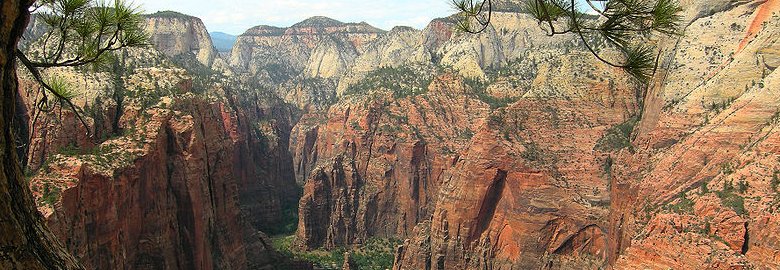 Angels Landing, Zion National Park, Utah
Angels Landing, Zion National Park, Utah http://commons.wikimedia.org/wiki/File:Angels_Landing.jpg
http://commons.wikimedia.org/wiki/File:Angels_Landing.jpg Tobias Alt
Tobias Alt
Zion National Park is a national park predominantly in Washington, but includes Iron and Kane counties in southwestern Utah. The park, established on 31 July, 1909, covers 146,598 acres (593 sq km).
Zion National Park is best known for its scenic landscapes, particularly at Zion Canyon and Angels Landing. Zion Canyon is a 15-mile (24-km) canyon carved by the North Fork of the Virgin River into the Navajo Sandstone, which has different shades of red. This deep canyon has a depth of up to half a mile (800 m). It stands at elevations ranging from 3,666 ft (1,117 m) at Coalpits Wash, to 8,726 ft (2,660 m) at Horse Ranch Mountain.
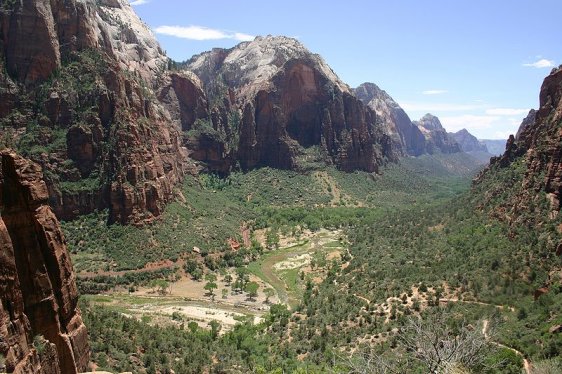 West Rim, Zion National Park
West Rim, Zion National Park http://commons.wikimedia.org/wiki/File:Hiking_The_West_Rim_Of_Zion_National_Park_from_Lava_Point_To_The_Grotto.jpg
http://commons.wikimedia.org/wiki/File:Hiking_The_West_Rim_Of_Zion_National_Park_from_Lava_Point_To_The_Grotto.jpg Jeff Turner
Jeff Turner
Zion National Park is the convergence point of the Colorado Plateau, the Great Basin and the Mojave Desert. Its geographical variety provides an environment for a profusion of plant and animal life.
The national park is home to 75 species of mammals, including 19 species of bats, 32 species of reptiles spread among its four life zones (desert, riparian, woodland and coniferous forest), 289 species of birds and numerous species of insects. Among the major wildlife of Zion National Park are mountain lions, Golden Eagles and several species of rare and endangered birds including the Peregrine Falcon, California condor and Mexican spotted owl.
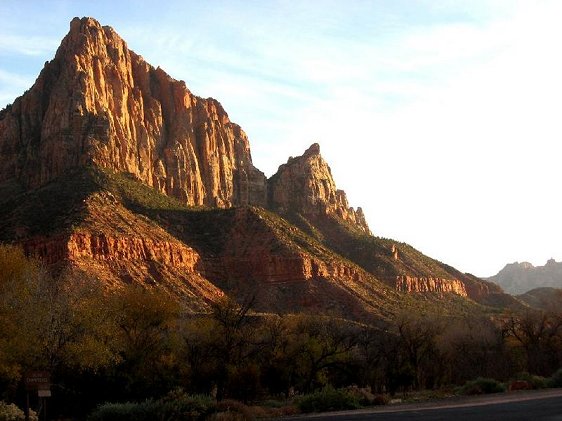 Mount Zion, Zion National Park
Mount Zion, Zion National Park http://commons.wikimedia.org/wiki/File:MtZionMt1.jpg
http://commons.wikimedia.org/wiki/File:MtZionMt1.jpg John A. Taylor
John A. Taylor
Evidence of human habitation in the area goes back about 8,000 years ago. Remains of early Native American cultures such as the Basketmaker Anasazi (300 AD) and the Virgin Anasazi (500 AD) have been excavated in the park.
The canyon of Zion National Park was first discovered in modern history by the Mormons in 1858. In 1909, President Howard Taft proclaimed the area the Mukuntuweap National Monument. It underwent a name change to Zion in 1918, under the acting director of the newly created National Park Service, as Mukuntuweap was deemed unpopular. The national monument was upgraded to national park status by the US Congress on 19 November, 1919. Then in 1937, the Kolob section was proclaimed as a separate protected area called Zion National Monument. It was incorporated into the park in 1956.
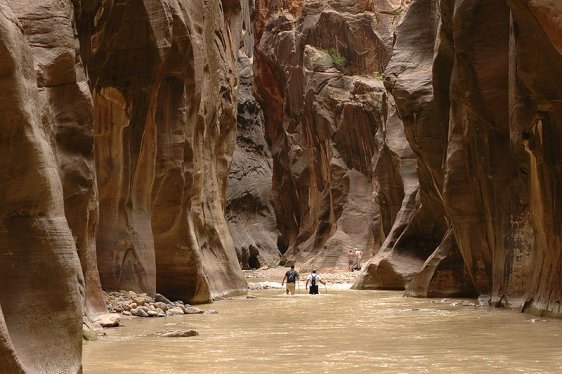 The Narrows, Zion National Park
The Narrows, Zion National Park http://commons.wikimedia.org/wiki/File:The_Narrows.jpg
http://commons.wikimedia.org/wiki/File:The_Narrows.jpg Christian Schirm
Christian Schirm
Visiting Zion National Park, Utah
Utah State Route 9 passes through Zion National Park. If you are coming from Las Vegas, take Interstate 15. Leave the I-15 at Exit 16 and head east on Utah State Route 9 until you reach the visitor center of Zion National Park.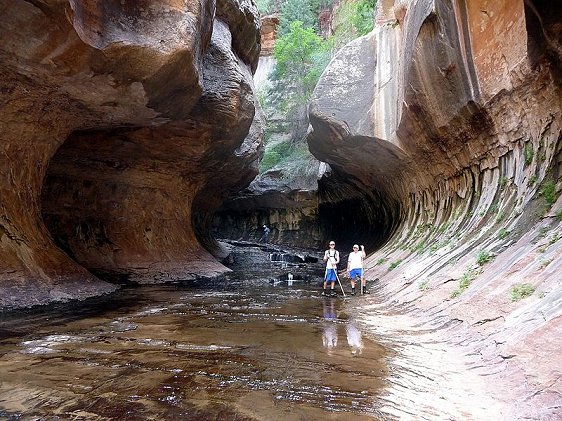 The Subway, Zion National Park
The Subway, Zion National Park http://commons.wikimedia.org/wiki/File:The_Subway_P1010240_wiki.JPG
http://commons.wikimedia.org/wiki/File:The_Subway_P1010240_wiki.JPG God of War
God of War
Zion National Park is open throughout the year. Its visitor center is open every day except Christmas Day. Opening hours varies from 8:00 am to 7:30 pm in summer to 8:00 am to 5:00 pm in winter.
Entrance fees to Zion National Park is $25 per private vehicle, valid for 7 days. Motorcycles and persons on foot are charged $12 each, valid for 7 days. There are also fee-free days including Martin Luther King weekend, National Park Week, Summer Soltice (21 June), National Public Lands Day and Veteran's Day weekend.
 Court of the Patriarchs, Zion National Park
Court of the Patriarchs, Zion National Park http://commons.wikimedia.org/wiki/File:Zion_Court_of_the_Patriarchs_Panorama.jpg
http://commons.wikimedia.org/wiki/File:Zion_Court_of_the_Patriarchs_Panorama.jpg LeavXC
LeavXC
List of National Parks in the United States
 Latest updates on Penang Travel Tips
Latest updates on Penang Travel Tips

Copyright © 2003-2025 Timothy Tye. All Rights Reserved.

 Go Back
Go Back